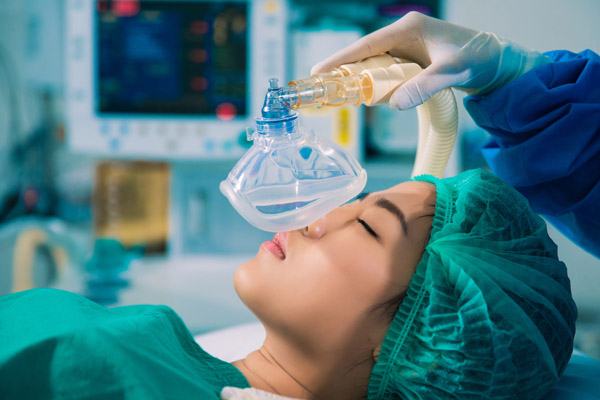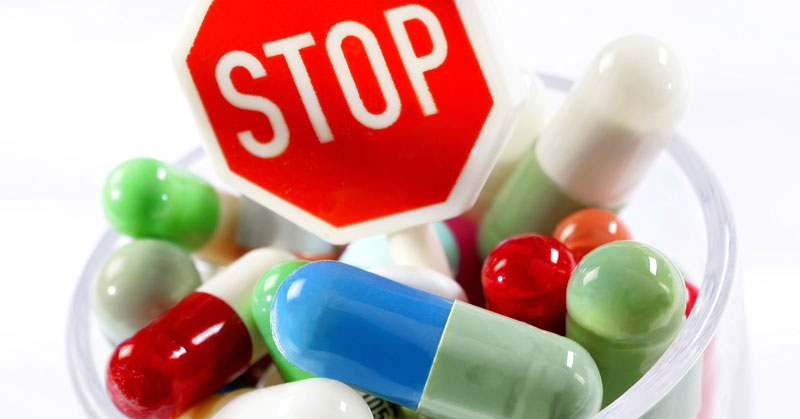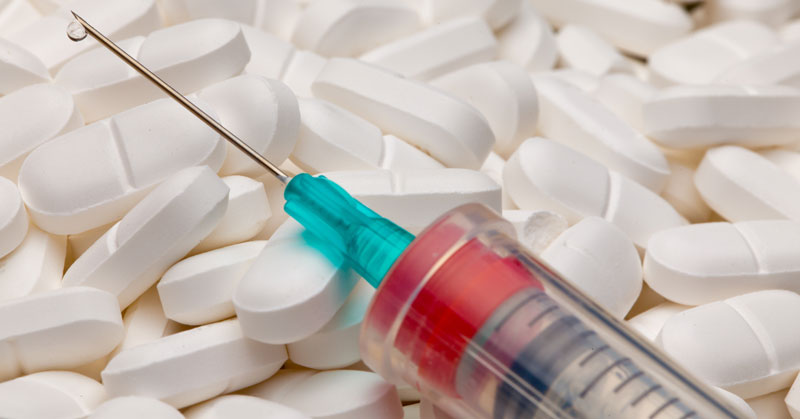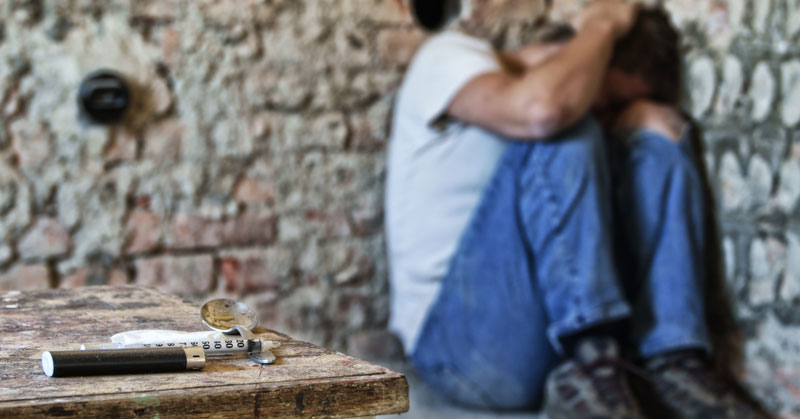Life Science RDD Services LLC, Rapid Drug Detox Center Earns LegitScript Certfication
Life Science RDD Services LLC, Rapid Drug Detox Center, the most highly recognized and respected drug treatment center in the country announced its certification with LegitScript. The drug-addiction treatment facility uses the RDD Method™ which reduces pain and suffering associated with drug withdrawal. https://www.rapiddrugdetox.com
Patients are faced with difficult tasks to evaluate quality treatment from some of the unscrupulous practices in the industry. Google, Bing and Facebook recognized this issue by mandating that, in order to advertise on their platforms, drug addiction treatment centers must undergo an extensive application and review process by LegitScript, a third-party compliance organization. The LegitScript’s Addiction Treatment Certification helps patients differentiate our services from addiction treatment facilities involved in illicit activities. Therefore, only those approved through this process are allowed to advertise on the search engines.
RDD Center has a stellar reputation and is an industry leader in the field of rapid detox. We offer the most affordable, advanced, safe and confidential anesthesia detoxification treatment in the country. There are very few detox programs offering this treatment and most of our patients travel to us from all over the country and world.
About Life Science RDD Services LLC, Rapid Drug Detox Center
Life Science RDD Services LLC is a drug-addiction treatment facility helping people detox from opiate dependence, greatly reducing pain and suffering with a private, safe drug detox procedure.
Our reputation for excellence, our stellar safety record, the strict confidentiality with our very private setting and our exclusively developed and innovative RDD Method™ of treatment have enabled us to maintain our top position as a national leader in the field of anesthesia assisted opiate detoxification. Our patient’s safety, confidentiality and comfort are our top priority. We are America’s premier rapid anesthesia detox center.
Contact Life Science RDD Services LLC at 1 (833) 558-8798 24 hours a day, 7 days a week or fill out the form at https://www.rapiddrugdetox.com/contact/ to have a qualified nurse contact you.
Detox from Your Opiate Addiction

Opiates are potent and powerful drugs derived from the poppy plant. Probably the most “famous” opiate is Heroin. Sometimes we refer to these drugs as “narcotics.” Opiates have been used for many centuries because they relieve pain. Today’s opiates can be natural or synthetic. Opioids attach themselves to specific proteins in your body. Doctors call these cells “opioid receptors.” We have them in our brains, spinal cords, and gastrointestinal tracts. When opioids attach to opioid receptors, they block the perception of pain.
Opiates also create a sense of euphoria by increasing dopamine levels in the parts of our brains that influence our perceptions of pleasure. Unfortunately, whether we begin taking the drugs to relieve pain or to feel the “high,” pretty soon it takes increasingly larger doses to work. So we take a little more. And many of us get hooked. WebMD reported recently that our use of illicit drugs and the nonmedical use of prescription medications are increasing.
Once you are hooked, you cannot miss a dose without feeling withdrawal symptoms; the sensations the body goes through as you attempt to quit. Withdrawal symptoms can be painful, particularly after heavy or prolonged use. During the early stages of withdrawal, you may feel restless or nauseous, perhaps abnormal breathing, slowed heartbeat, sweating or even loss of consciousness. You may also suffer muscle aches, vomiting, diarrhea, irritability, anxiousness, dehydration and thoughts of suicide. Then it gets worse. Withdrawal symptoms can range from chills with goose bumps (your skin looks like the skin of a “cold turkey”) to flushing (hot flashes), kicking movements of the legs (“kicking the habit” – similar to restless leg syndrome) and excessive sweating. Expect severe pains in your bones and the muscles of your back and extremities, even muscle spasms. Most patients call a “cold turkey” withdrawal unbearable.
You can try to quit alone. But, the pain of withdrawal; both physical and emotional often lead to relapse.
Instead of going it alone, the RDD (“Rapid Drug Detox”) Center offers effective results, superior care, safety, and privacy in a licensed surgical facility. It is a proven, affordable medical procedure, the RDD Method™, administered by experienced board certified physicians, that effectively reduces the pain and discomfort associated with conventional detox.
The Center’s RDD Method™ for detoxification from opiates takes place under anesthesia. This medical procedure eliminates most of the withdrawal symptoms. When you arrive at the Center, you receive a brief medical exam. Then a licensed and board certified physician administers medication to help you relax, and then a light, general anesthesia for about 1 hour. Following the procedure, recovery begins, always under direct medical supervision.
Your recovery begins with a phone call. When you call, you speak with a professional nurse or an experienced intake coordinator. The call is toll-free. Call The Rapid Drug Detox (RDD) Center at 1-866-399-2967 now and take the first step toward a lifetime of freedom from addiction.
The RDD Center makes sure that nurses are on call 24 hours a day, 7 days a week, and that the Center’s knowledgeable, licensed medical professionals are always available to answer all of your questions.
U.S. Epidemic – Prescription Drug Abuse

“Approximately 6.1 million Americans abuse or misuse prescription drugs,” according to a 2013 published study. Many think automobile crashes are the culprit but overdoses are the leader of injury related deaths in the United States. As opioid prescriptions are escalating, the Centers for Disease Control and Prevention has classified prescription drug overdose as an epidemic in this country. Reports conclude that the misuse and abuse of prescription medications are on the rise and creating a huge public health problem for our nation. Treatment facilities, emergency room visits, overdose and deaths, place an enormous cost and burden to families, communities, U.S. health providers and the nation. Prescription drug laws, monitoring programs, policy and physician education all need to be overhauled in response to combat this growing national problem in order for drug abuse in the United States to decrease and for our current programs to be more effective.
Trust for America’s Health and The Robert Wood Johnson Foundation Report
Opiate Addiction and Help

It is easy to get addicted to opiate drugs, as they are freely available at the doctors office and they can be found in an abundance in the thriving black market. Physicians have been known to over prescribe. Patients have been known to enjoy the immediate euphoric feelings that opiates induce. When a person uses opiates in the short-term, it will be highly likely that they will soon become addicted to the drug, as opiates are known to be the most addictive drug that you can ingest. The drug will take over the brain almost immediately, binding to pain and pleasure receptors. Depending on the type of opiate and the method used to ingest the external substance, will determine how immediate and hard the opiate will hit the user. Rapid Drug Detox Center aids tremendously with the RDD Method which includes anesthesia detox. You will leave Rapid Drug Detox Center free of opiates. Withdraw is exactly what addicts try to avoid by continuously ingesting opiates in order to experience short-term relief. Rapid Drug Detox Center removes most of these withdrawal symptoms while you are under anesthesia using the RDD Method.
Emotional and Physical Symptoms of Opiate Withdrawal
Withdrawal symptoms from opiates; Heroin, Suboxone, Methadone, usually begin shortly before your next scheduled dose of the drug. Sometimes they start just a few hours after your last dose of the opiate, but usually they hit you between 6-12 hours after your last dose. Withdrawal symptoms can include irritability, sleeplessness, and increased appetite.
You may also notice watery eyes, a runny nose, yawning; perhaps you start sweating or have trouble sleeping (insomnia). You may often feel restless, irritable, notice a loss of appetite, body aches, severe abdominal pain, nausea and vomiting, diarrhea or tremors. If your cravings get stronger, you may feel dysphoria (a profound state of unease), start to think about suicide, and get a strong craving for your drug. Expect changes in your appetite or sleep patterns and, sometimes, frequent nosebleeds, especially if you have been “snorting” drugs. Those cravings for your drug of addiction all too often lead to relapse despite your best efforts to quit.
Your friends may notice changes in your appearance, such as a sudden weight loss or weight gain, that you neglect your personal grooming, and perhaps start to smell bad. Some people get the shakes, talk incoherently or start to slur their words and have problems with coordination.
In addition to the physical symptoms that you might suffer, your emotions are in turmoil, too. You may notice loss of interest in work or extracurricular activities, including your hobbies, sports or exercise, and a decrease in motivation. Some people become silent and withdraw from people around them. Some take up secretive or suspicious behaviors. Some people in withdrawal find periods of unusual hyperactivity or agitation; you may laugh for no apparent reason.
You may feel nervous or tense, confused and depressed. You may experience unwarranted fear, even paranoia. Anxiety can set in. Changes in your senses can bring on sleep difficulties. You may feel confused, dizzy, and forget things. Mood swings are common. Altered perception can lead to poor judgment. Your crankiness may drive away some people who would like to support you.
Many who try to quit on their own fail due to the physical cravings and loss of social support.
You do not have to do it alone. The licensed physicians and medical support staff at the RDD (Rapid Drug Detox) Center have developed the RDD Method™ that can “clean” your body of its addiction to opiates quickly, while you sleep through the procedure under the supervision of a board certified physician. The procedure and treatment take just 3 days and most patients describe it as “detox without the discomfort.”
- « Previous Page
- 1
- …
- 41
- 42
- 43
- 44
- 45
- …
- 62
- Next Page »


